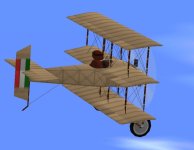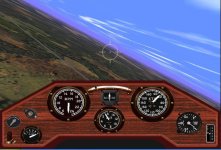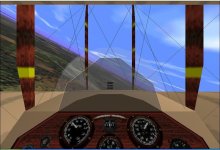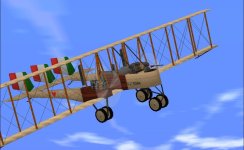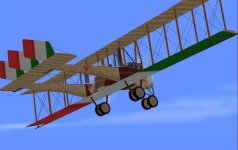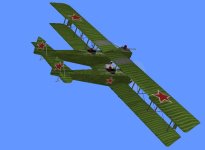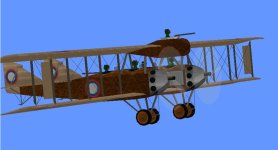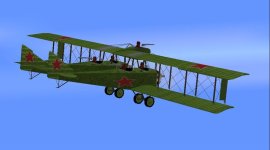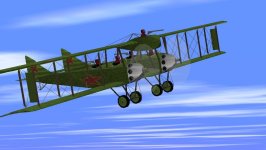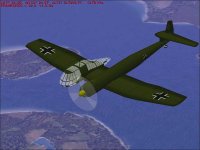aleatorylamp
Charter Member
Realism and Playability
Hi Ivan, Hi all!
Yes, I´m very happy indeed that my models are meeting with such good acceptance in SOH! Thank you for your motivating comment! This is also largely due to your, Smilo´s and Hubbahubba´s support in guiding me towards finding interesting solutions to the different problems that come up since I´ve started upgrading my models for CFS1. It´s nicely refreshing to see that a lot can still be done to keep CFS1 as an attractive simulator for which add-ons are interesting!
I´ll upload the Pensuti Piccolo Triplanino as soon as it´s finished, as it is quite an extraordinary piece of old-time engineering, down-scaled from the huge Caproni multi-engined triplane bombers Ca-40, 41 and 42.
As I am more of a builder than a flyer, I´m afraid that with respect to the aspect of realism in games vs. simulators, I can only really say that if the main thing is playability, then I would expect realism to fall back into a secondary plane, whereas for a simulator, realism is of course much more important, so in games the player would know he´s in a game, I suppose, with a convenient illusion of realism to make things more exciting.
As for realism with respect to what kind of aircraft would be fighting each other in a historical context, this is an even more difficult question to comment on. Who would want to face an enemy if the outcome of the confrontation is determined by the historical data as regards effectivity and performance of the aircraft in question? Probably only conveniently chosen aircraft with equivalent chances of victory or survival would be attractive.
Here we would probably be talking about fictitious confrontations.
I mean, who would want to pilot an airship and be attacked by biplane fighters with incendiary bullets?
Now, when it comes with CFS1, this is a realistic simulator that is to be played as a game too! ...so here we have a question as regards how exactly simmers expect a given plane to be flown so as to be attractive in a game, and how much realism its performance should retain. Fortunately, the .air and Dp files can be tweaked to suit an individual simmer´s expectations!
Anyway, I hope you all have a nice Sunday!
Cheers,
Aleatorylamp
Hi Ivan, Hi all!
Yes, I´m very happy indeed that my models are meeting with such good acceptance in SOH! Thank you for your motivating comment! This is also largely due to your, Smilo´s and Hubbahubba´s support in guiding me towards finding interesting solutions to the different problems that come up since I´ve started upgrading my models for CFS1. It´s nicely refreshing to see that a lot can still be done to keep CFS1 as an attractive simulator for which add-ons are interesting!
I´ll upload the Pensuti Piccolo Triplanino as soon as it´s finished, as it is quite an extraordinary piece of old-time engineering, down-scaled from the huge Caproni multi-engined triplane bombers Ca-40, 41 and 42.
As I am more of a builder than a flyer, I´m afraid that with respect to the aspect of realism in games vs. simulators, I can only really say that if the main thing is playability, then I would expect realism to fall back into a secondary plane, whereas for a simulator, realism is of course much more important, so in games the player would know he´s in a game, I suppose, with a convenient illusion of realism to make things more exciting.
As for realism with respect to what kind of aircraft would be fighting each other in a historical context, this is an even more difficult question to comment on. Who would want to face an enemy if the outcome of the confrontation is determined by the historical data as regards effectivity and performance of the aircraft in question? Probably only conveniently chosen aircraft with equivalent chances of victory or survival would be attractive.
Here we would probably be talking about fictitious confrontations.
I mean, who would want to pilot an airship and be attacked by biplane fighters with incendiary bullets?
Now, when it comes with CFS1, this is a realistic simulator that is to be played as a game too! ...so here we have a question as regards how exactly simmers expect a given plane to be flown so as to be attractive in a game, and how much realism its performance should retain. Fortunately, the .air and Dp files can be tweaked to suit an individual simmer´s expectations!
Anyway, I hope you all have a nice Sunday!
Cheers,
Aleatorylamp

